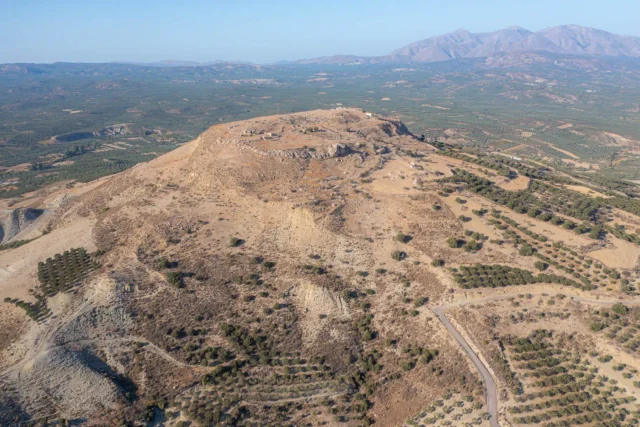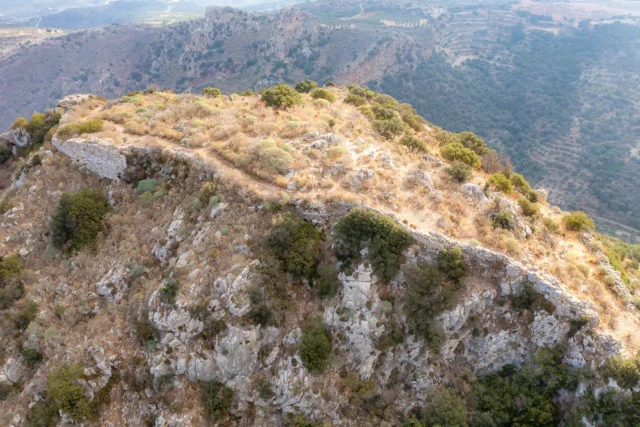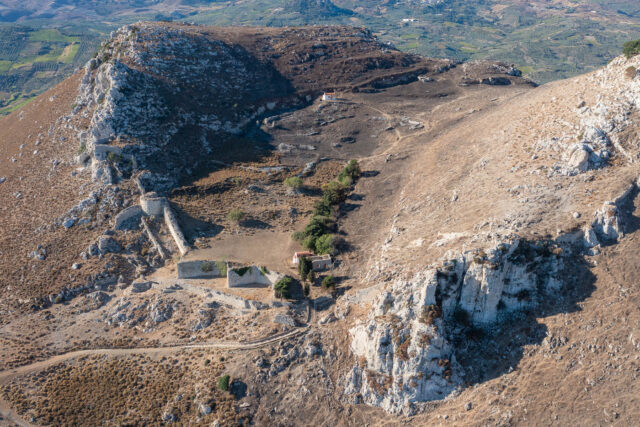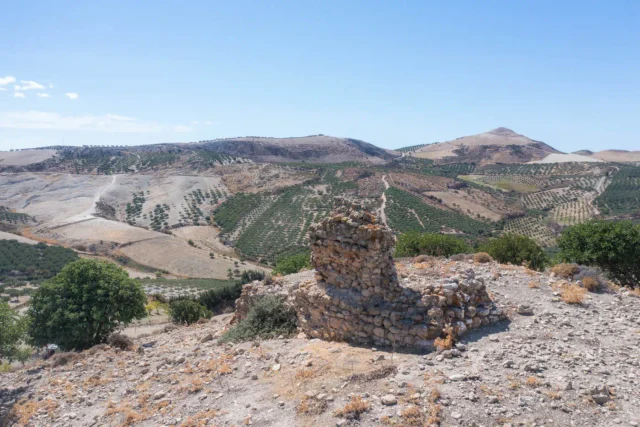
Castel Bonifacio
Castel Bonifacio, or Epano Kasteli, in Crete, is a ruined fortress with Venetian and possibly Byzantine roots. Built by Enrico Pescatore, it served as a key Venetian stronghold, withstanding revolts like the Skordiles-Melissenos in 1230. Its architecture features fortified walls, square towers, and a central cistern. The site includes a ruined church and remnants of other buildings, reflecting its military and community functions. The fortress's decline began in the late Byzantine period, and the village of Tsifout Kasteli grew at its base. Archaeological research continues to uncover its layered history, highlighting its strategic role and architectural evolution.
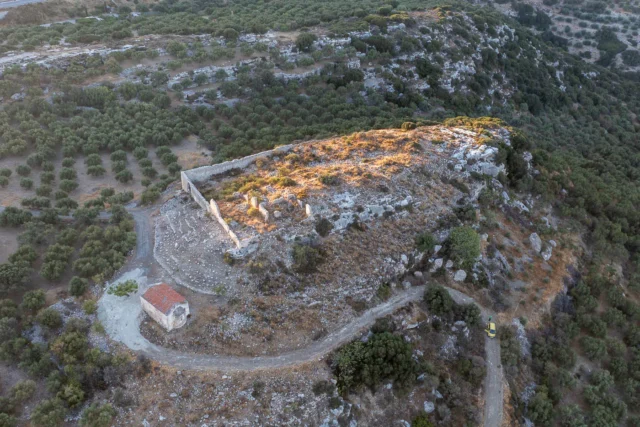
Castel del Corner
The Castello del Corner, or Fortress of Kornaron, stands on Kastellos hill near Katalagari, Crete. Tradition attributes its construction to Nikephoros Phokas in 961 AD, following the Arab expulsion. During Venetian rule, it served as a fiefdom for the Corner family, linked to the famed poet Vitsentzos Kornaros. The rectangular fortress, with a 5.5-meter high wall, spans approximately 50 acres, and features Minoan-era wine presses and the church of Zoodochos Pigi. Ruins include wall remnants and possible cisterns, reflecting its role in Malvasia wine production. Restoration efforts have stabilized parts of the perimeter wall.

Castel Nuovo (Kasteli Messara)
Castel Nuovo, a 1206 Genoese fortress, stands in ruins on Psilo Kasteli, near Phaistos, Crete. Constructed by Enrico Pescatore, its strategic hill location offered views of Messara. Built on the ancient Aina site, it played a role in Cretan revolts against Venetian rule, including the Two Syvritos (1230-1236) and Kallergis (1363-1367) revolts. The fortress, also briefly reoccupied during the Cretan War (1645-1669), is the namesake of Kainourgiou province. Today, wall and cistern remnants mark the historical landmark, offering insights into Venetian-era Crete.
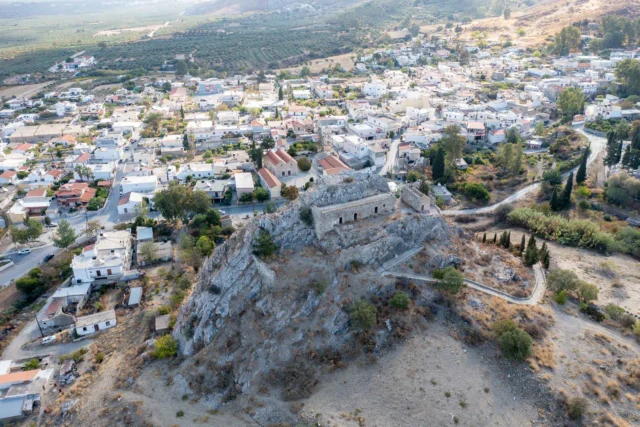
Charakas Fortress
Charakas Fortress, located on the Charaki rock in Crete's Asterousia Mountains, features Venetian fortifications built over a Middle Byzantine site. Visible remnants include a main building with three vaulted chambers, two rectangular towers, and the Church of the Transfiguration of the Savior. The fortress, strategically positioned for panoramic views, was likely constructed in the 14th century and later abandoned during Ottoman rule. The western side, the most accessible, is fortified with a double perimeter wall, while the eastern side's cliffs offered natural defense. Architectural details include rainwater collection systems and lime mortar floors carved into the rock. The site reflects the region's medieval history and Venetian defensive strategies.
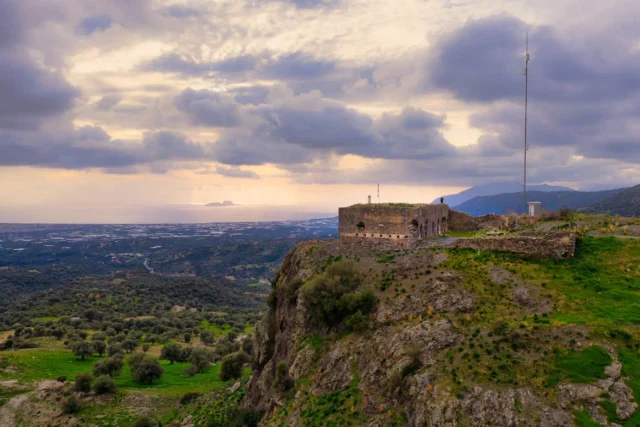
Koules in Magarikari
The Koules of Grammeni, also known as the Koules of Grigoria or Magarikari, is an Ottoman fortress in Crete, Greece. Built in the late 19th century during the Great Cretan Revolution (1866-1869), it was strategically positioned between the villages of Grigoria and Magarikari overlooking the Messara Plain. Measuring 25 meters by 11 meters, with 24 embrasures, it was used as a stronghold by the Ottomans to maintain control over the rebellious Cretan population. In May 1944, it provided refuge to the villagers of Magarikari during the German occupation. Today, the Koules of Grammeni stands as a well-preserved reminder of Crete's turbulent past and the island's enduring spirit.
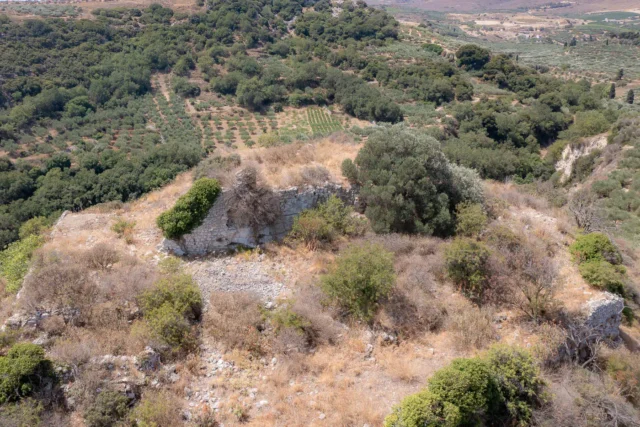
Melesses fortress
The Melesses Fortress, located east of Melesses village in Heraklion, Crete, represents a Byzantine-era stronghold. Its hilltop location provided strategic defense and control of a vital trade route. Architectural ruins reveal stone walls, a central tower, and evidence of earlier Hellenistic occupation. Constructed during the 9th-10th centuries to protect Crete from Arab raids, the fortress highlights Byzantine military and social structures. Its strategic significance is underscored by its proximity to the Karteros River and its role in Crete's defense network. Studies indicate its economic importance in regulating trade between the coast and inland plains. The site's history reflects Crete's complex past and its resilience during the Byzantine period.

Melissa Fortress
Melissa Fortress, near Agios Thomas, Crete, offers panoramic views of valleys. Built in the 11th century during the Byzantine Komnenian period, it controlled strategic routes. The site features a central tower-like structure, perimeter walls, and the well-preserved Zoodochos Pigi chapel, possibly a former monastery. The ruins indicate a pentagonal layout, with a small settlement, Melissa, existing nearby. Historical records note its presence in Venetian and Turkish documents, though it was not utilized or maintained by the Venetians, leading to its abandonment. The ruins reveal a glimpse into Byzantine era fortifications and regional control.
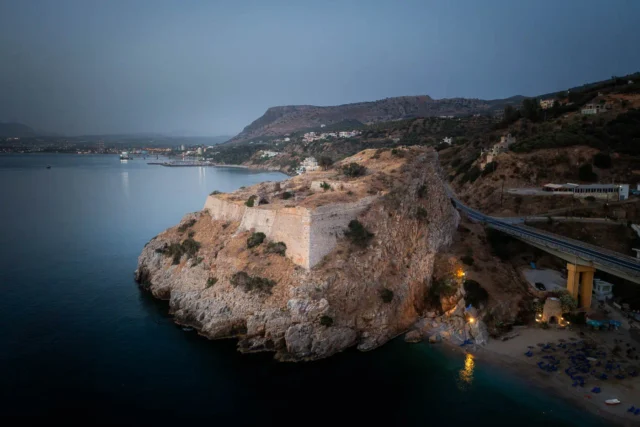
Palaiokastro Fortress: Guardian of Heraklion Bay
The Palaiokastro Fortress, built by Venetians (1573-1595) on a cliff overlooking Palaiokastro Beach near Heraklion, Crete, defended Heraklion Bay. Its three levels housed powder magazines, a cistern, barracks, and a chapel. The winged lion of St. Mark on its walls signifies Venetian heritage. Captured by Ottomans in the Cretan War (1645-1669), the fortress was documented in the 1900s by G. Gerola. Now partly ruined, it's undergoing restoration.
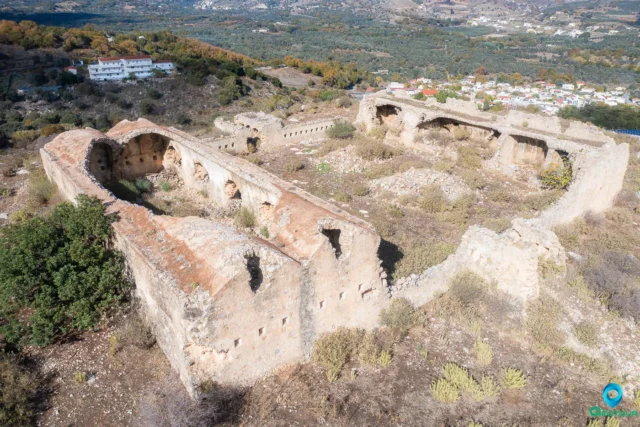
The Koules of Koxare
The Koules of Koxare is an Ottoman-era fortress located near Koxare village at the entrance of Kourtaliotiko Gorge in Rethymno Prefecture, Crete. Built between 1866 and 1869, it was part of a network of fortifications designed to control movement and quell rebellions on the island. The Koules is characterized by a large internal courtyard, thick stone walls, and remnants of arched structures. Partially destroyed in 1896 during the Cretan revolution, it stands as a testament to the island's struggle for freedom from Ottoman rule. Despite its deteriorated state, the Koxare Koules remains an important historical landmark with potential for preservation and tourism development.
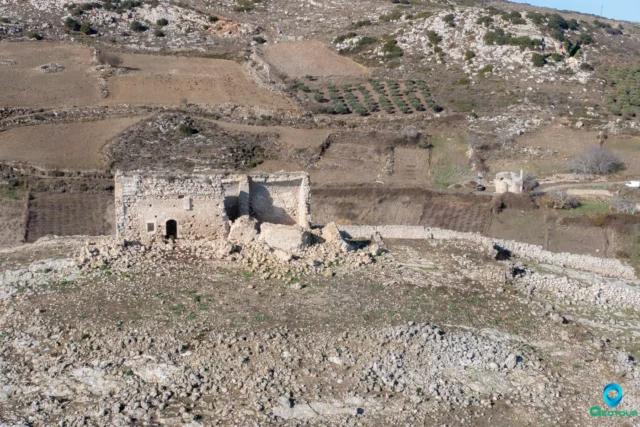
Tholoi Fortress near Alagni
The Tholoi Fortress, near Alagni, Crete, dates to the 16th-17th century, reflecting Venetian and Ottoman periods. Situated on a hilltop, it served as a strategic point for surveillance and defense. Its design shows Venetian villa influences, with local stone construction. The fortress, now in ruins, experienced damage, including from the 2021 Arkalochori earthquake, but the outer wall remains. Nearby, the 15th-16th century Church of Agioi Apostoloi, bearing the Corner family crest, suggests a connection to the fortress, possibly as a spiritual center. The fortress, with dimensions of 15 by 9 meters, played a role in Venetian-Ottoman conflicts and potentially as a Turkish "koules" during the 1866-1869 Cretan Revolution.
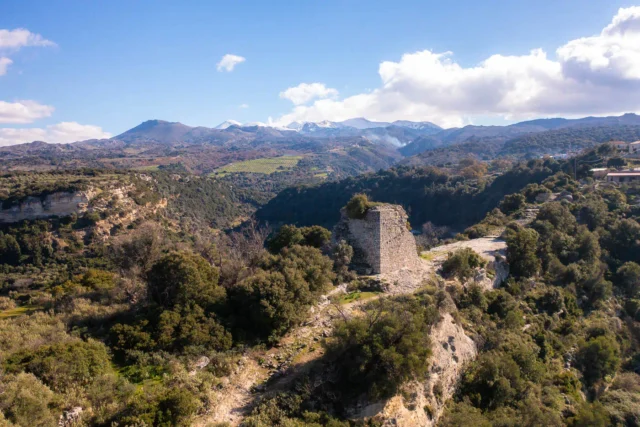
Tower of Eleutherna
The Tower of Eleutherna, located at the acropolis's southern entrance, functioned as a key defensive point, likely dating to the Byzantine period and built on older foundations. Its strategic position on a narrow col guarded the city's access. Historical records by Buondelmonti (1415) and Pococke (1739), along with maps, note its existence and fortification significance. The partially restored structure provides archaeological insights into its construction and historical role.

